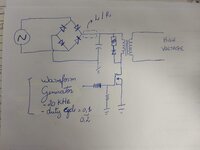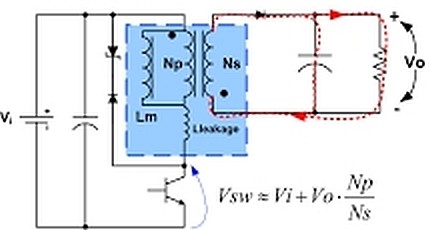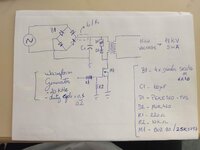Jc_eletrica
Newbie
Hi! I've been working with Flybacks for a short time, I managed to design some at input voltages of up to 30 V, so far. But now, it's the first time I build one with a voltage of 220VAC and I'm facing a problem, I hope someone can give me a 'light'. I initially set up the following schematic, based on more than one source of Flyback calculation in discontinuous mode and the values were similar between them. Go to the assembly.
The problem:
Even measuring the primary inductance with an LCR meter, and sizing the components according to the Flyback manuals, the MOSFET and the rectifying diodes burn out in a few milliseconds connected through a circuit breaker.
I tried to carry out tests by changing the capacitor's load current limiter, imagining that was it, but the resistor consumes a lot of power and with the maximum inductance I had, (2mH), the problem was not solved. Turning the circuit on for 10ms and current limiting with inductor, I was able to see the secondary work. When increasing the time the MOSFET explodes.
I am not able to identify the cause of these current spikes.
Any help is welcome!
The problem:
Even measuring the primary inductance with an LCR meter, and sizing the components according to the Flyback manuals, the MOSFET and the rectifying diodes burn out in a few milliseconds connected through a circuit breaker.
I tried to carry out tests by changing the capacitor's load current limiter, imagining that was it, but the resistor consumes a lot of power and with the maximum inductance I had, (2mH), the problem was not solved. Turning the circuit on for 10ms and current limiting with inductor, I was able to see the secondary work. When increasing the time the MOSFET explodes.
I am not able to identify the cause of these current spikes.
Any help is welcome!



